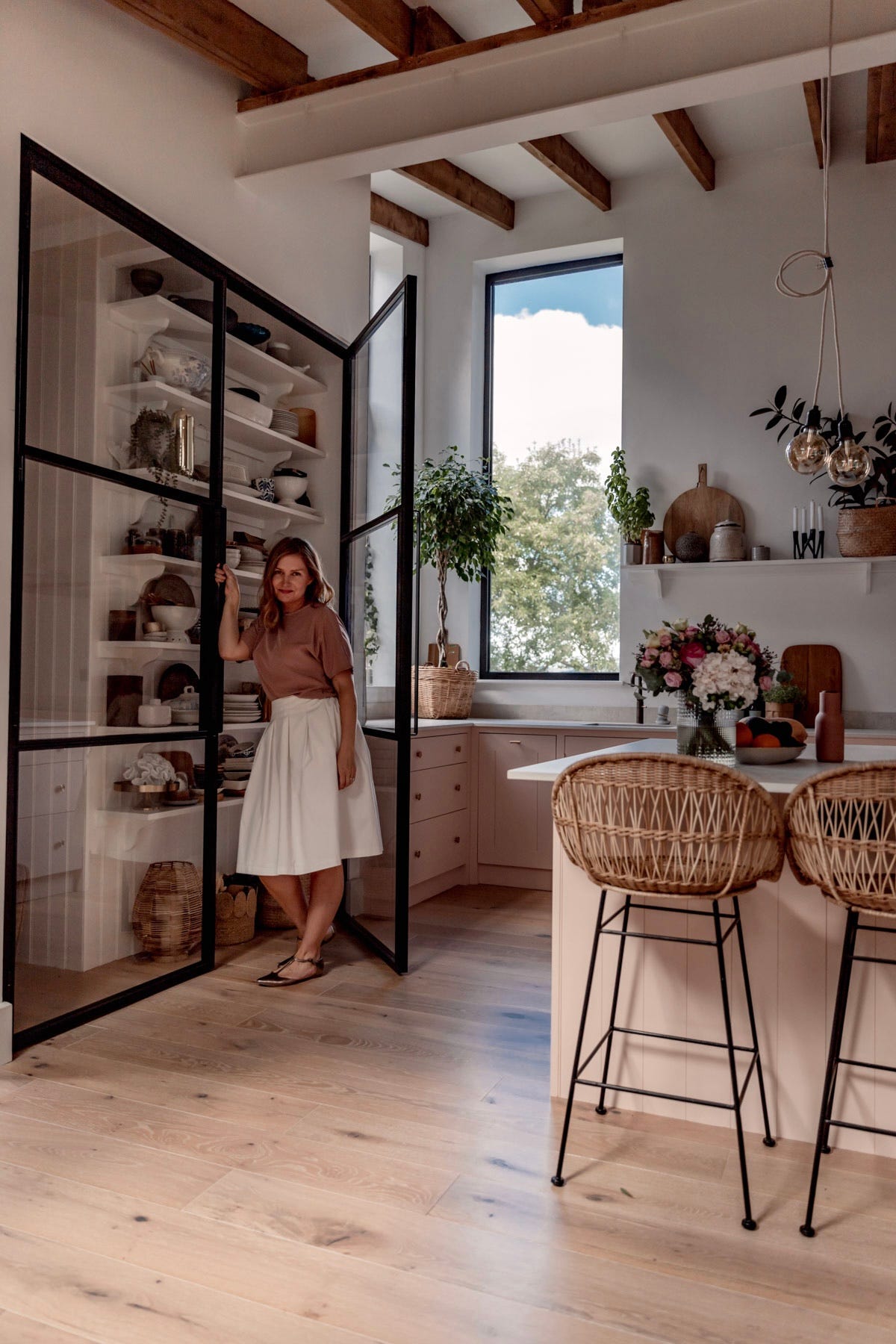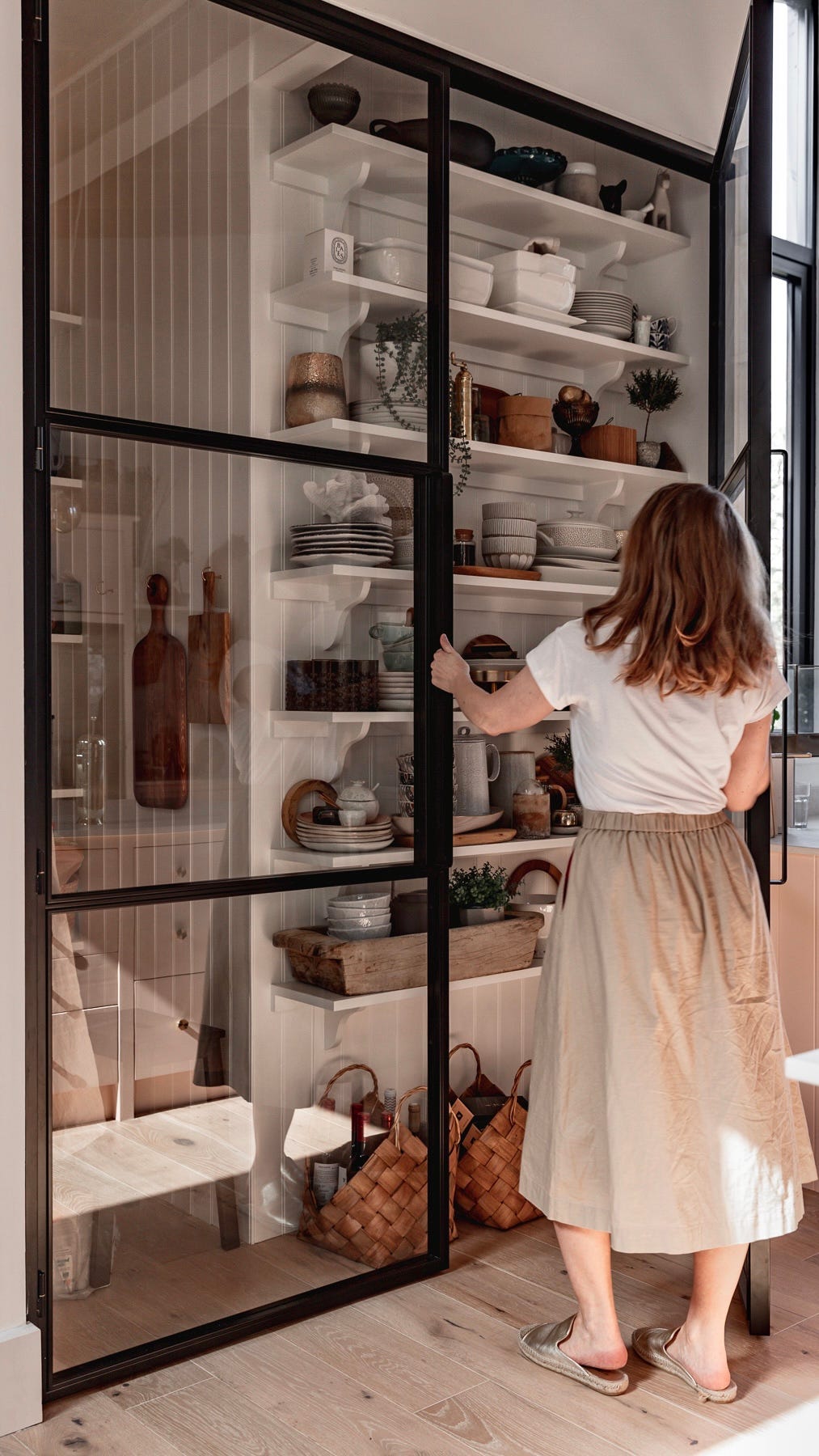How to design a pantry?
All you need to know about pantry planning (and all the details of my pantry)
Anything to do with my pantry is one of the most asked questions I get - so I’m sharing ALL the pantry details, dimensions and sources with you in this post as well as general guidance how you can design a pantry yourself. I’m forever grateful to those of you who have subscribed, and I hope you find these posts helpful and interesting.
When we first moved into this house, long before we started the renovation and even before we decided to move the existing kitchen to another side of the house, I had set my heart for one thing. I wanted to, no, needed to have a pantry. And not just any old place to keep my tins and bags of pasta, but somewhere I could display all my favourite crockery and other treasures.
Now, I didn’t set out to become evangelical about dry goods storage, but here we are. Of all the rooms and renovations we’ve tackled, it’s this modest little cupboard that draws the most questions on my Instagram. If you’ve followed me there for any length of time, you’ve probably seen me open these doors a hundred times…
Perhaps you’ve been wondering too: How deep are the shelves? How far apart? How big is the pantry? Why is it that shape? What do you store in there? Where are the doors from? And what about those baskets?
Well, you’re about to find out!
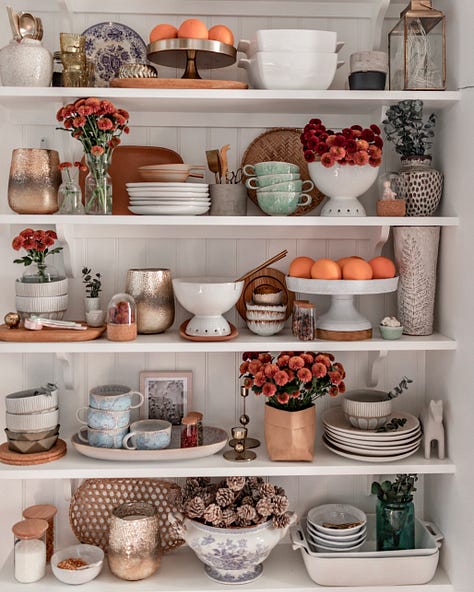
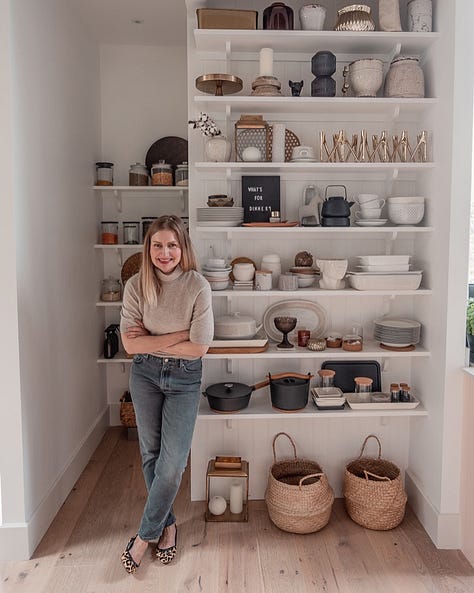
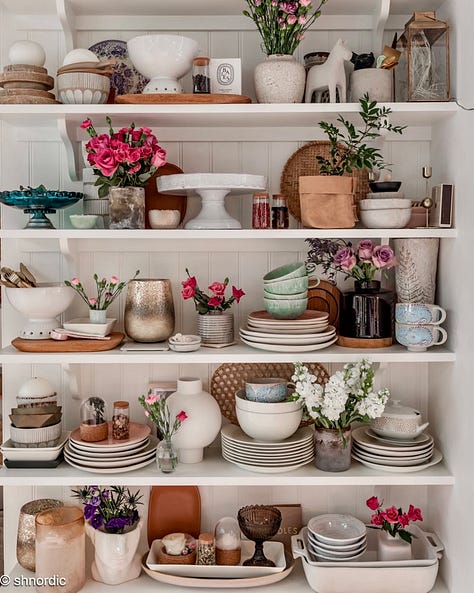
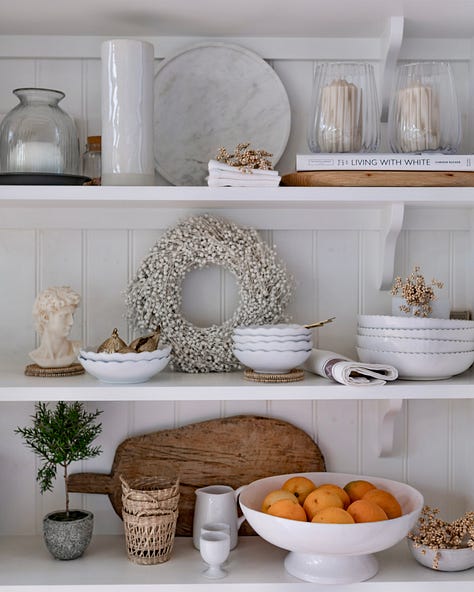
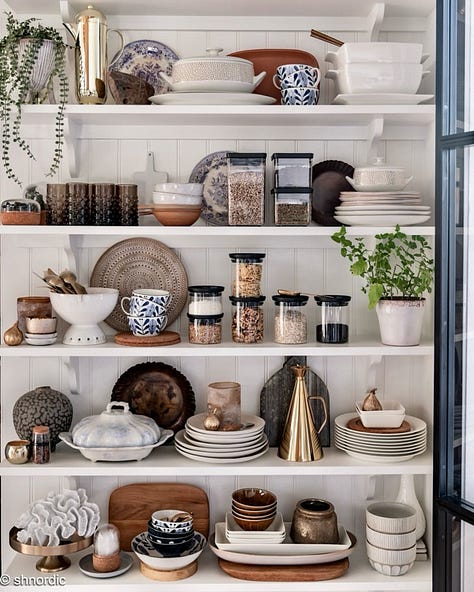
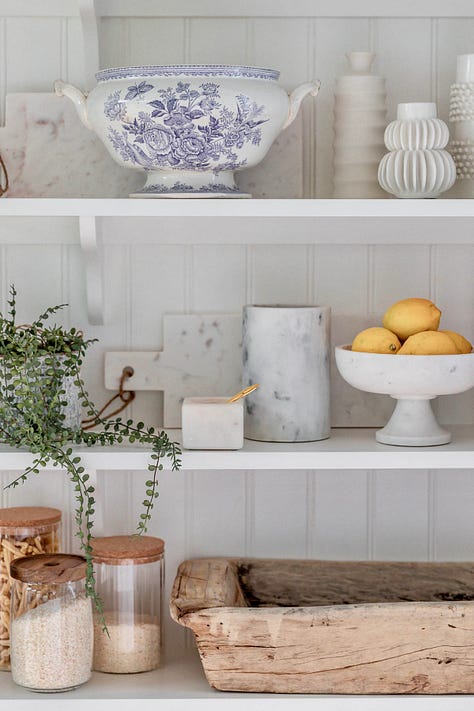
But before we get into the particulars, a brief ode to the pantry itself.
A brief history of pantries
The word “pantry” has its roots in the Old French paneterie—literally, a place for bread (pain, naturally) whereas pantry’s cousin, larder, derives from the Medieval Latin lardarium, meaning a place for keeping meat and lard. These days both words describe cool storage spaces for a variety of food items in the kitchen.
In large historic homes in Britain, food storage and preparation were carefully divided into a series of purpose-built spaces, each with its own role in the domestic hierarchy. Grand English houses often had multiple pantries, each with a distinct role (because of course they did).
As the name implies, the pantry was originally for bread and later expanded to include dry goods. This was more of a working storage space, possibly adjacent to the kitchen or bakehouse. It was practical and food-focused, essentially a provision store.
By contrast, the butler’s pantry was the dignified cousin. Usually tucked discreetly between the kitchen and dining room, this was where the good silver lived. This was the butler’s domain, dedicated to the care, storage, and sometimes the cleaning of silver, china, crystal, and linens. It might also include a sink (but not for washing up greasy things, that was the scullery's job) and even a small safe for valuables. It was more of a staging area for formal meals than a food store.
So one for food, one for finesse.

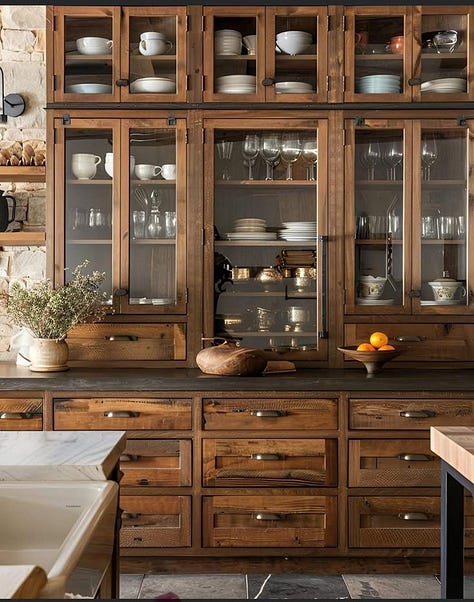
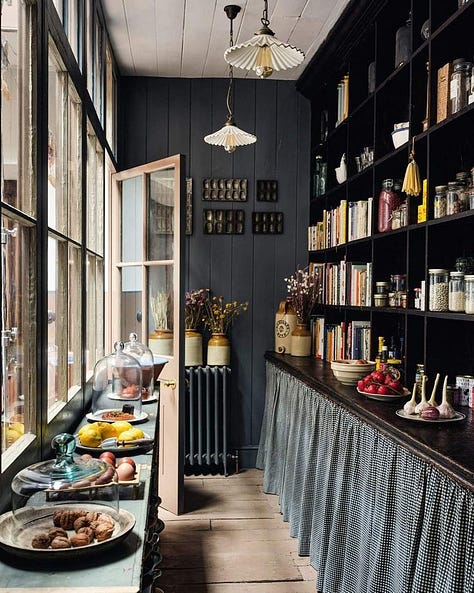
The scullery was the gritty workhorse of the kitchen world. This was where the dirty dishes and muddy vegetables were dealt with. Sinks and stone floors, cold water taps and clattering pans. If a Victorian house had a back door through which servants entered, the scullery was likely the first stop. It was loud, wet and distinctly unglamorous.
As homes became smaller and household staff less common, the myriad sub-rooms of the kitchen began to collapse into one. But the idea of the pantry endured. In America, it took on a more democratic, multifunctional role—somewhere between storage and staging area.
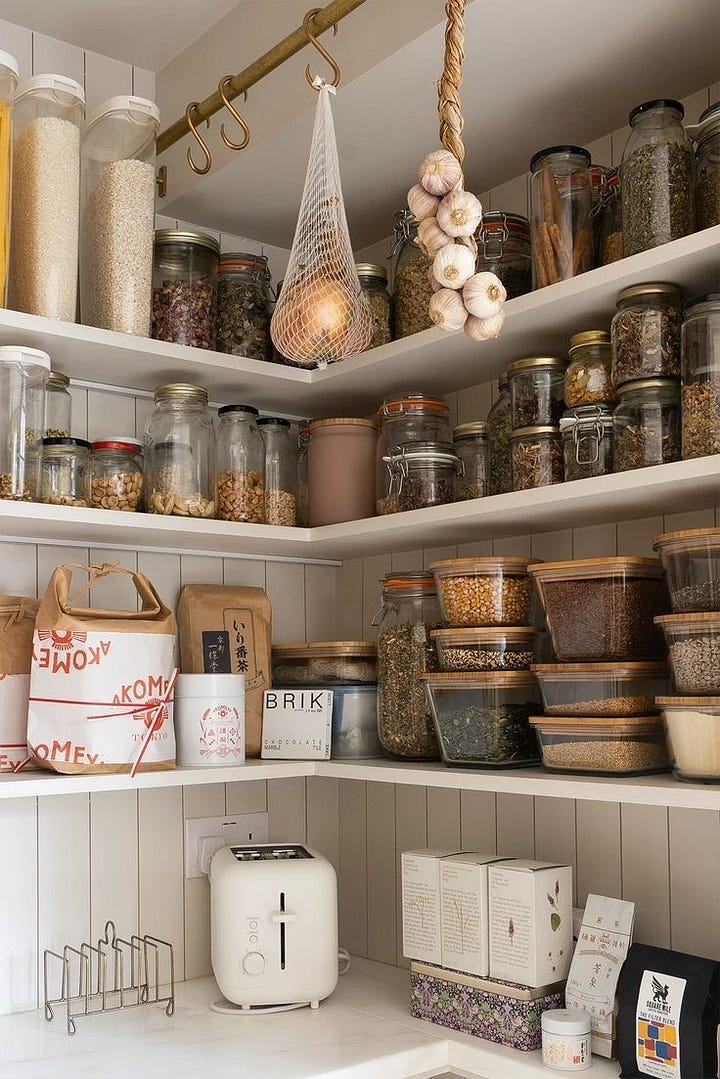
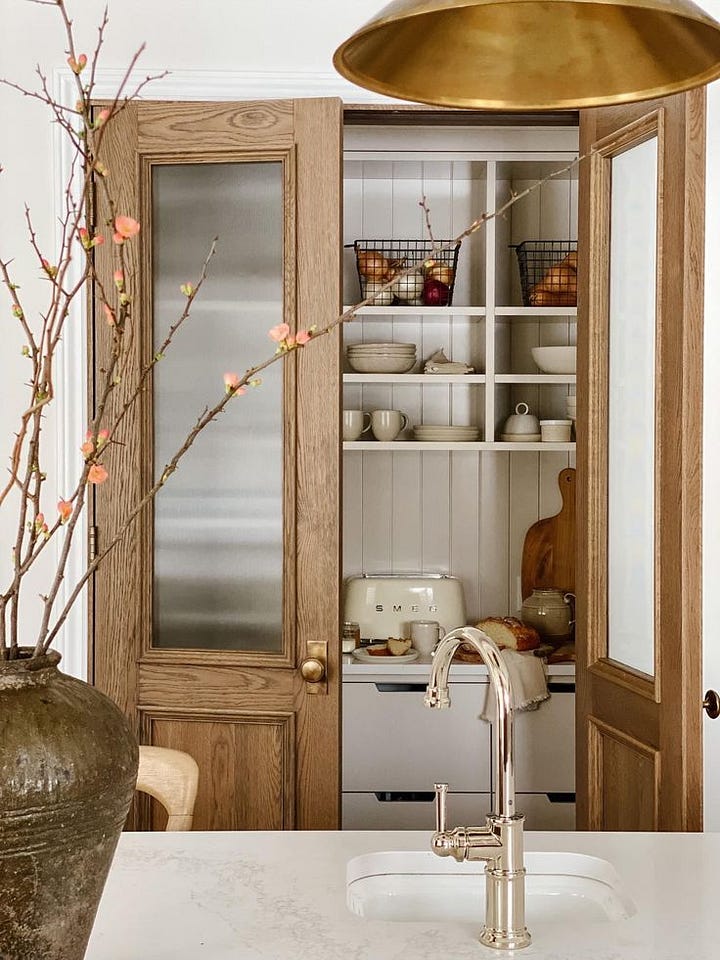
Today’s pantry is something of a renaissance space. It might be a full walk-in room with its own lighting and sockets, or a slim pull-out cupboard built between studs. Some are sleek and utilitarian; others are gloriously maximalist, painted in joyful colours with space for cake tins, herb jars, and the odd rogue fondue set.
Whatever form it takes, the modern pantry reflects our desire to bring a bit of order to domestic chaos. A little backstage area where everyday mess can be hidden, and breakfast can be assembled without a performance. A place for dry goods, secret snacks, small appliances are kept out of sight.
Order with a touch of indulgence.
Designing your own pantry
This post is for paid subscribers but you can upgrade for the price of a fancy coffee. In return, you’ll get a lovely bundle of posts each month - interior design guides, garden diaries, design musings, snippets of life in the Cotswolds, and creative inspiration from books, places and the quiet moments in between. Plus full access to the ever-growing archive. I’d thoroughly recommend it!





